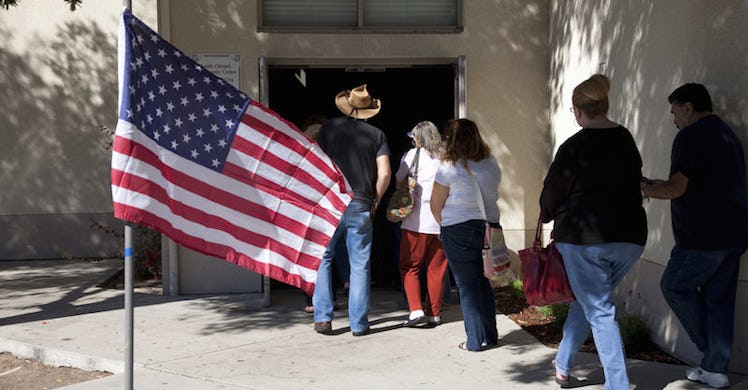
You've Been Reading Presidential Election Polls All Wrong, And Here's Why
If you run a Google News search for "breaking polls," you'll find a lot of conflicting stories. "Clinton and Trump Neck and Neck," "Clinton Widens Her Edge" and "New Poll Shows Trump With Biggest Lead Yet," are just a few excerpts of the first headlines I found in my query. Newspapers and political websites often post multiple times a month or even week with a new "breaking" poll that shows some dramatic shift in the race since the last "breaking" poll.
For the average American, this can all be very confusing. Some weeks, depending on the narrative, it can seem as if Clinton has Trump dominated, and then the next, like the race is too close to call.
If you didn't know any better, you might assume that events are shifting millions of voters' opinions about the candidates back and forth week by week. This, however, is not at all how voters actually think, but rather the product of a media that must produce excitement during the course of a year-long presidential race.
By and large, voters have a party preference. According to Gallup, about 56 percent of registered voters are Republicans or Democrats. Democrats make up about 30 percent of registered voters, while Republicans account for around 26 percent. These people rarely stray from their party in Presidential races. In 2012, for example, Obama and Romney received 92 percent and 93 percent of the vote from their respective parties. It is considered highly unlikely that a candidate will fail to get at least nine out of 10 voters from their party to support them.
Outside of the parties, however, there are still independents, which make up 43 percent of the electorate. You might think these people are where these apparently large shifts in polling come from. Perhaps there really are millions of people who aren't quite sure who they want to vote for and are swayed by weekly events. This, however, is also not true.
Most people who don't directly identify with a party still vote mostly according to party lines. When you break down independent voters according to how they usually vote, only about 10 percent are "pure" independents, meaning they usually vote both ways. Democratic "leaning" independents supported Obama by a ratio of nine to one in 2012, and Republican "leaning" independents supported Romney at nearly eight in 10.
So if the opinions of voters are mostly durable over time, how do we explain why polling can vary so greatly? Oftentimes, it can be explained by the sheer number of polls. FiveThirtyEight, a website by election forecaster Nate Silver, has pollster rankings, which lists literally dozens and dozens of polls. With this many polls operating, it is obvious that at any point, some of them will probably be statistical outliers, which are often the ones the media presents to the public as they are the most shocking.
For example, this ABC News Poll that shows Clinton up by double digits was shown widely in the media although Clinton's lead in it was well above her lead in the average of polls.
Another reason why polling is often inaccurate has to do with mistakes by the pollsters themselves, who often make methodological errors as well as the fact that very few people even bother to respond, leading to misrepresentations of actual public opinion.
So how, then, do we move forward knowing that polling can so often betray us? One good rule of thumb is to never get too hung up on one or a handful of polls. With so many polls to look at, averaging them out is often the best way to gauge where the public really stands. The average of polls at RealClearPolitics has Clinton leading by about 5 percent nationally, which is about where most experts believe she will be in November.
It is also useful to look at historical patterns from previous elections. Breaking down voters by race and gender can help us understand how certain candidates are performing. For example, in 2012, Obama received 93 percent of the African-American vote and 71 percent of the Hispanic vote and won the election quite easily. If we assume that Clinton will get similar numbers, that means Trump will have to do better with White voters, who voted for Romney 59 percent of the time. This is a major reason why many forecasters are doubtful of Trump's chances.
The media has an incentive to make certain polls big news. Polls that show a close race or a surge in momentum are newsmakers, while polls that line up with the average are typically less exciting. Polls that can show a narrative such as "Clinton surging" or "Trump closing" feed into other news about events happening in the political race. If Trump says something offensive and a poll shows him down by a large margin, a story can be written about how his words made him lose support. While if he rises, it might also be easy to write a story about how his brashness is making him more popular.
To actually correctly predict the outcome of the election it is much for useful to look at long-term trends and averages. Voter preferences are almost always more durable than to be swayed by week to week events. That doesn't mean that candidates can't close gaps in support or lose voters, but it does mean we should be wary of how the media covers polls.
Citations: Gallup, Washington Post, FiveThirtyEight, ABC News, Real Clear Politics